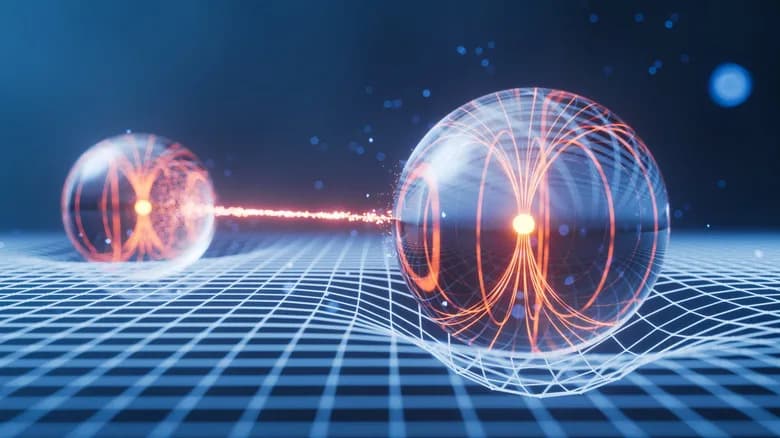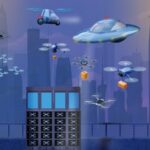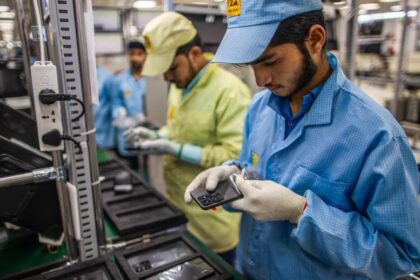Quantum radar enters the mass production conversation
China says it has begun mass producing a device it calls a photon catcher, a single photon detector built to spot the faintest possible signals. The claim points to a strategic goal that has animated defense labs for years, quantum radar that might detect aircraft designed to evade traditional radar, including U.S. stealth fighters. The announcement comes from the Quantum Information Engineering Technology Research Center in Anhui province, with coverage in Science and Technology Daily, a publication of the Ministry of Science and Technology. The device is described as ultra low noise and four channel, and Chinese sources frame it as a core building block for future quantum communication and sensing systems.
- Quantum radar enters the mass production conversation
- What China says it has built
- How quantum radar works
- Why stealth jets might be exposed
- The hard physics problems still in the way
- What the new detector could change
- From lab curiosity to layered air defense
- A global race, not a singular effort
- What to watch next
- The Bottom Line
The stakes are large. Stealth aircraft depend on shaping, coatings, and tactics to reduce radar returns and to confuse sensors. If a practical quantum radar can separate a true signal from the surrounding noise by using quantum properties of light, then aircraft that rely on low observability would be easier to find. Defense planners in the United States and allied countries are watching, since their airpower concepts assume that well planned stealth operations can penetrate integrated air defense systems with acceptable risk. A working quantum radar would change risk calculations across air defense, maritime surveillance, and battlespace management.
China has not revealed a fielded radar. The country is highlighting a component, not a complete system. Even so, mass production of a sensitive detector suggests an effort to scale hardware that was once confined to a laboratory bench. The gap between a laboratory device and an operational radar is wide, and many technical obstacles remain. The story, for now, is less about a finished capability and more about a race to mature the hardware needed to make quantum sensing practical outside the lab.
What China says it has built
Chinese state media describe the photon catcher as the first ultra low noise single photon detector with four channels to reach mass production. The four channel architecture allows simultaneous detection of several signals, which can improve image formation and speed. Reports add that the device cuts noise by large margins and can operate at very low temperatures, down to roughly minus one hundred twenty degrees Celsius, which helps preserve fragile quantum states. Another claim is that the detector package is much smaller than competing products, on the order of one ninth the size of common single channel units. Smaller hardware can be easier to integrate into mobile or distributed sensor systems.
The purpose of a single photon detector is simple to state and hard to achieve. It must reliably register the arrival of one photon, the smallest discrete unit of light, while ignoring everything else. In a realistic environment, that single photon is surrounded by thermal radiation, sunlight, reflections, electronic interference, and sensor noise. Chinese sources emphasize that mass production brings self sufficiency in a key quantum component, a point with both industrial and strategic meaning.
Science and Technology Daily, which is overseen by the Ministry of Science and Technology, used a vivid metaphor to explain the challenge. The paper described the precision needed to pick out a true signal in a noisy environment.
According to Science and Technology Daily, a publication of China’s Ministry of Science and Technology, isolating a single photon compares to an almost impossible act. The outlet explained the sensitivity with a striking image.
like distinguishing the sound of a single grain of sand falling during a thunderstorm
State media also said the detector will support quantum communication networks, quantum key distribution for secure links, and a range of sensing applications beyond radar, from biomedical imaging to deep space laser ranging. The device was introduced as part of a broader national push to make core quantum components domestically.
How quantum radar works
Quantum radar is an umbrella term for sensing methods that use quantum mechanics to improve detection in noisy or low power conditions. One approach, often called quantum illumination, starts by creating pairs of entangled photons. Entanglement links the properties of the two photons at creation, so they carry a shared fingerprint. The radar sends one photon toward a target and stores its partner in a special memory. If a photon returns, the receiver compares that return with the stored partner. A match indicates that the return likely came from the original transmitted photon and not from random background. Correlation, not raw signal strength, is the key.
Quantum illumination in plain terms
Conventional radar blasts out many radio waves, collects echoes, and looks for patterns that rise above noise. Stealth works by reducing those echoes, often to the point that the receiver cannot separate them from clutter. In a quantum system, the radar looks for a telltale connection between the outgoing photon and any returning photon. Even if the return is very weak, the unique link can make it stand out. The method can also resist certain tricks like digital radio frequency memory spoofing, since a jammer cannot easily replicate the exact quantum state of a photon.
Why jamming gets harder
Electronic warfare tactics try to blind or confuse a radar by feeding it false signals or saturating it with noise. The physics of quantum states offer a defense, because an adversary cannot perfectly clone a quantum state. That does not make the radar invincible, but it changes the game. The harder part is not jamming resistance, it is building a system that can generate, send, store, and measure the right photons at useful distances and over realistic time scales.
Why stealth jets might be exposed
Stealth aircraft like the F 22 and F 35 reduce their radar cross section by shaping the airframe to deflect waves and by using materials and coatings that absorb energy. They also carry weapons internally and manage radar emissions to limit detection. These methods are effective against traditional radars, which depend on the strength of the echo. A quantum radar that can confirm that a returning photon is truly linked to an emitted photon could spot an aircraft even when the return is faint. In principle, that lowers the advantage of low observability. In practice, it depends on range, measurement speed, and the ability to track targets through maneuvers and clutter.
Chinese reporting suggests that a multi channel single photon detector would improve detection and imaging rates. It could also reduce the energy a radar needs to emit, making the radar itself harder to detect. If the device consumes less power and works reliably across a wider temperature range than older superconducting detectors, it might find its way onto more platforms, from fixed ground sites to high altitude balloons or drones. The promise is a more sensitive receiver that turns a trickle of photons into reliable detection cues.
The hard physics problems still in the way
Quantum sensing works best at short distances where fragile correlations can survive. Many demonstrations have taken place across laboratory spaces, tens of feet, or at most short ranges measured in kilometers under ideal conditions. Claims of one hundred kilometer detection in past tests are still debated outside China, and have not led to public fielded systems. Even Chinese analyses point to stubborn constraints that block rapid deployment.
Creating entangled photon pairs at radio frequencies, which travel far and penetrate weather, is much harder than doing so at optical or microwave wavelengths. The devices that generate and count photons often require cryogenic cooling to preserve quantum coherence. Many quantum computers run near absolute zero for a reason. Cooling a sensor on an aircraft or on a rotating ground antenna to that level is a major engineering challenge. It adds weight, power demands, and maintenance complexity.
Decoherence, the tendency for quantum states to fall apart when they interact with the environment, limits range and reliability. A radar needs to measure direction and speed quickly for tracking. Conventional radars easily extract Doppler shifts to find velocity. Quantum approaches that use single photons can struggle to build velocity information fast enough without long integration times. Long integrations can be fine for imaging static scenes but do not fit the tempo of air defense where seconds matter. Atmospheric absorption, scattering, and background radiation add more noise.
U.S. research organizations have acknowledged the theoretical advantages while describing current systems as not yet practical for long range detection. That sober assessment remains the baseline outside laboratory experiments. The leap from a clean bench test to an operational radar that scans wide volumes, fuses data from many channels, and holds calibration day after day is nontrivial.
What the new detector could change
A better single photon detector can improve the weakest link in quantum radar, the receiver. If the device reduces noise, captures more true photon events, and handles several channels at once, then a radar can collect usable data faster. Faster imaging raises the chance of detecting fast moving targets and isolating their position. Multi channel collection also enables multi wavelength strategies. A system might probe with different frequencies and combine them to improve confidence.
Chinese descriptions say the detector uses less power and emits less energy when used in a radar role, so the radar is less visible to enemy sensors. Low energy transmission is attractive for survivability. It also matters for platforms with tight power budgets, such as small unmanned aircraft and stratospheric balloons. A small detector package, if confirmed, widens the list of places the sensor can go, from ground arrays to maritime patrol assets. If deployed across many nodes, a network of modest quantum sensors could share cues and cross confirm contacts.
From lab curiosity to layered air defense
Even if a single quantum radar is not ready to stand alone, its returns could feed a larger surveillance picture. China has invested in very high frequency radars that are better at spotting aircraft with low radar cross sections, as well as optical sensors in space. Reports of satellites with high resolution optical payloads suggest a route to persistent wide area observation. Infrared search and track sensors, used by several air forces, can detect the heat signatures of aircraft regardless of radar stealth. A photon level radar could join this mix as a cueing source. When one sensor hints at a track, others can stare hard and refine the picture.
Modern air warfare is now a contest of networks. The side that fuses data from many sources, filters out decoys, and pushes targeting quality information to shooters faster gains an advantage. If China can integrate quantum sensors into its command networks, even with short range coverage at first, it could create detection opportunities where none existed. Stealth would still reduce engagement windows and complicate targeting, but surprise would be harder to achieve.
A global race, not a singular effort
China is not alone in pursuing quantum radar and related sensors. Universities and government labs in North America and Europe have run quantum illumination experiments for more than a decade. Canada has funded work at the University of Waterloo aimed at Arctic surveillance. The European Union has poured money into quantum technology programs, and defense firms are exploring military sensing applications. U.S. labs have validated the physics and continue to study quantum sensing, while focusing near term on proven approaches like infrared search and track and passive radio frequency networks.
India and other countries are building quantum research centers, exploring quantum communication and navigation that could back up satellite systems. These investments reflect a broad belief that quantum technologies will matter for security and commerce, even if timelines are uncertain. The race is as much about building an industrial and scientific base as it is about any single device. Countries that can mass produce low noise detectors, stable photon sources, and robust quantum memories will be better positioned to field practical systems when breakthroughs occur.
What to watch next
Evidence that quantum radar is moving from claim to capability will come from demonstrations that match operational conditions. Key milestones include flight tests of cooled detector packages on airborne platforms, multi kilometer detection with consistent tracking of moving targets, validated velocity measurement, and integration into air defense networks for cueing. Transparent trials observed by outside experts will carry the most weight.
On the hardware side, watch for progress in radio frequency photon sources, compact cryogenic systems that can work on platforms, and quantum memories that preserve coherence long enough for practical use. On the deployment side, track whether sensitive detectors begin appearing on shore based radars, airships, drones, or ships. An incremental path is likely, where quantum sensors first add value in niche roles before expanding into wider coverage. Until those steps take place, stealth aircraft will retain much of their edge, although planners will need to account for shrinking margins in contested regions.
The Bottom Line
- China says it is mass producing a four channel, ultra low noise single photon detector nicknamed the photon catcher
- The device is presented as a key building block for quantum radar and quantum communication networks
- Quantum radar uses entangled photons and correlation checks to pull a real signal from noise, which could expose stealth aircraft
- Range, cooling, decoherence, and measurement speed remain the major barriers to fielding a practical system
- A better detector strengthens the receiver side, promising higher imaging rates and lower power consumption
- Even with limits, quantum sensors could support a layered air defense network alongside VHF radars, space optics, and infrared systems
- Several countries are investing in quantum sensing, making this a global competition rather than a single nation breakthrough
- Credible progress will be evident through realistic field trials, platform integration, and independent validation












